This extensive guide shares everything you need to know about water quality and testing in the US and beyond.
📌 Key Takeaways:
- Water quality is a measure of water’s physical, chemical, and biological characteristics as relates to the specific application.
- Sources of contamination affecting water quality include pollution from local manufacturing processes, sewage releases, and naturally occurring elements.
- Water quality is monitored through sampling and testing, using biosensors, Consumer Confidence Reports, real-time monitoring, and more.
Table of Contents
🚰 What Is Water Quality?
Water quality is an indication of water’s physical, chemical, and biological characteristics in relation to the standards set for its specific purpose (application).
By assessing water quality, we can determine whether or not water has been treated to achieve certain standards, demonstrating compliance. Water quality may also be assessed and monitored to convey:
- The condition of drinking water
- The extent of water pollution
- The health of ecosystems
- The safety of human contact
The quality of a water source determines its uses and the extent of treatment required.
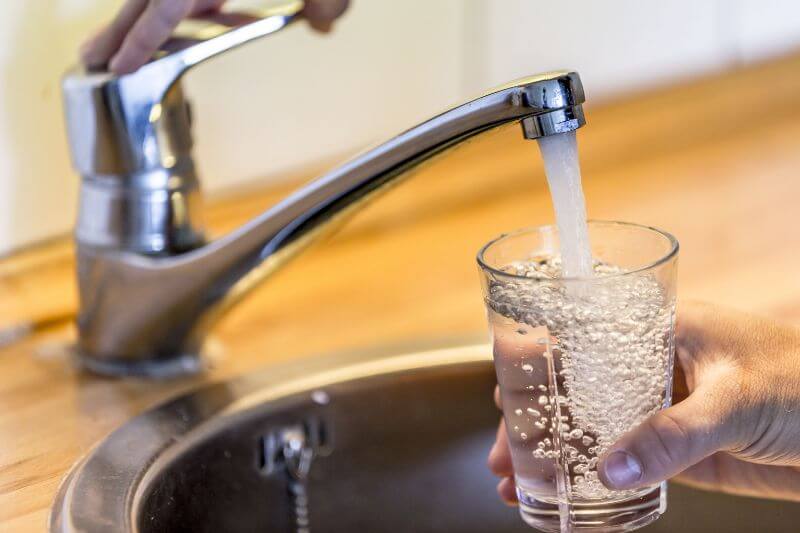
🔎 What Affects Water Quality?
Water quality is affected by both natural and non-natural contaminants.
Local geology and the ecosystem differ from region to region, which affects the contents of local water supplies.
Additionally, common sources of contamination, which affect the quality of a water supply, are:
- Human sewage releases
- Naturally occurring minerals and chemicals (like iron, fluoride, and uranium)
- Pollution from local manufacturing processes
- Agricultural land use (such as livestock farming and pesticide use)
- Malfunctioning septic systems and other wastewater treatment systems
- Poorly maintained, corroded, or damaged distribution systems
🤔 What Is Considered “Quality Water”?
Now we know a bit about water quality and how it’s affected, let’s look at the definition of “quality water”.
There’s no set standard for quality water – i.e. water that is considered good quality – across all areas of intended use.
The biggest focus is on water that is treated for human consumption, water for domestic or industrial use, and environmental water quality.
Let’s look in more detail at these three water uses.
Water For Human Consumption
Water for human consumption needs to be free from contaminants that could harm us or make us sick if we drink them.
Some of the contaminants potentially present in public drinking water prior to treatment are:
- Viruses
- Bacteria
- Protozoa
- Herbicides and pesticides
- Inorganics like metals and salts
- Organics from petroleum use and industrial processes
- Radioactive impurities
This water type is considered “quality water” if it contains only trace amounts of these harmful impurities.
Note: water is not expected to be entirely pure. There’s a reasonable expectation that water for human consumption contains a small number of certain contaminants – but not enough to pose a human health risk.
To ensure that quality water is maintained, the US Environmental Protection Agency (EPA), authorized by the Safe Drinking Water Act (SDWA), sets standards that water treatment facilities must adhere to.
There are two types of standards for public drinking water quality:
- Primary Standards, which regulate potentially health-harmful contaminants
- Secondary Standards, which regulate impurities with aesthetic effects, such as poor taste, smell, or appearance
For water products (such as bottled water and other beverages containing water), there are regulations set by a separate governing body: the U.S. Food and Drug Administration (FDA).
So, how is quality drinking water maintained?
In urban areas, municipal water suppliers use water purification technology to treat the water and remove contaminants that compromise water quality. All public drinking water supplies in the US are treated before they’re distributed to homes, businesses, and other local residents.
Sadly, there are still millions of people around the world who don’t have access to a clean, treated water supply. These people are at risk of serious illness from drinking pollutants and waterborne pathogens. Polio, typhoid, dysentery, cholera, and hepatitis A can all be contracted from drinking an untreated water supply.
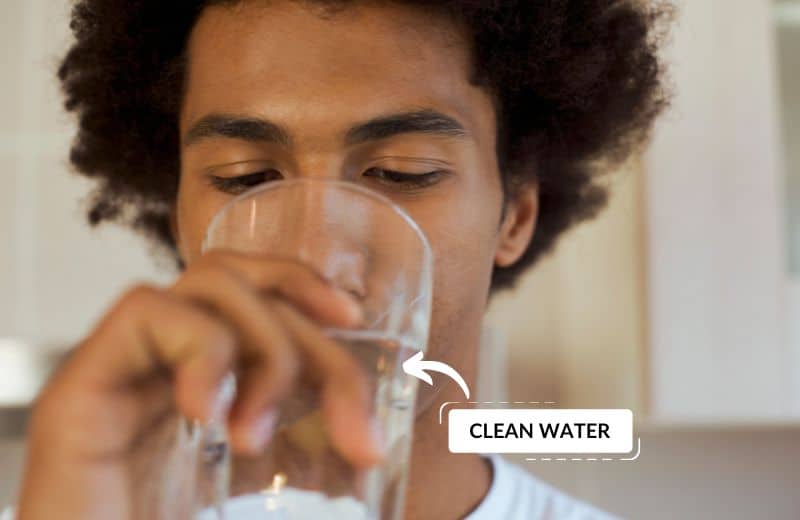
Water For Domestic Or Industrial Use
Water for domestic or industrial use doesn’t necessarily need to be of drinkable standard – and “quality water” in this case depends on the water’s intended purpose.
Water’s suitability for various domestic and industrial uses may be affected by its dissolved ions content. Calcium and magnesium (hardness minerals) are the two key minerals that cause the most problems in industrial and domestic applications because they form limescale and reduce the cleaning properties of soap.
The treatment of water to make it a suitable quality for domestic or industrial use may include purification, where certain contaminants are removed, and softening, where calcium and magnesium minerals are exchanged with harmless ions (usually sodium). Again, treatment depends on the intended use of the water.
Water Quality In The Environment
Our oceans, lakes, rivers, and reservoirs have varying water quality, depending on local ecosystems and environmental conditions, as well as local contamination and pollution.
There’s no set standard for “quality water” for a natural water source. It depends largely on the water’s intended use.
Certain substances and pathogens may affect the quality of water in the environment, making it unsafe for swimming, irrigation, industrial use, fishing, and other non-drinking purposes.
There may be local water quality laws in place that protect wildlife from the pollution of these natural water sources. Some laws allow for mild contamination of water in the environment, as long as healthy ecosystems are restored and/or maintained. Other laws are more focused on protecting human health (if water is used for human consumption) or protecting an endangered species that relies on a quality water supply.
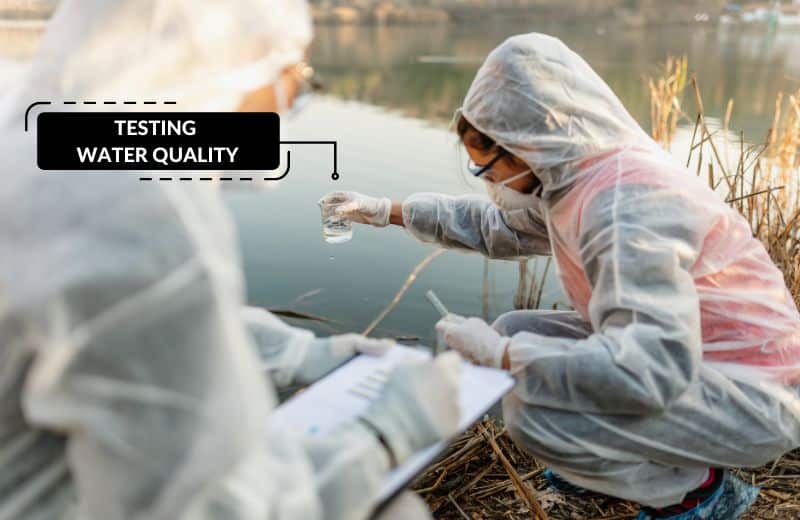
🧪 How Water Quality Is Tested & Monitored
So, we know about water quality across various water sources – but how is water quality measured?
Water Sampling
One of the most effective ways to monitor water quality in the long term is to use a water sampling device.
Some of the water conditions that might be logged by water sampling are:
- Dissolved oxygen levels
- pH
- Conductivity
- Turbidity
- Temperature
- Oxygen reduction potential
- Secchi disk depth
There are various methods of sampling that may be used, depending on the parameters that need to be tested for and the required testing accuracy.
A few sampling methods that may be used are cluster sampling, random sampling, passive sampling, and remote surveillance.
Some states use autosamplers, which automatically collect samples at various times and record water conditions.
Laboratory sampling is the best option for occasions when complex measurements need to be taken, and requires water samples to be collected and analyzed at a laboratory.

Are there any setbacks in water sampling?
Yes. First, a water sample is only accurate at the time of taking the sample, since the quality of a water source is ever-changing. For this reason, regular samples are required to get an overall understanding of water quality.
Secondly, water samples may be altered by the container they’re collected in. The container needs to be clean and free from materials that might leach into the water or react with substances in the water.
This second problem is easy enough to avoid. Most issues can be minimized by analyzing the water as soon as possible and keeping samples at a cold enough temperature to prevent phase change and chemical reactions.
Consumer Confidence Reports
Consumer Confidence Reports (CCRs) are produced by public water suppliers and provided to water customers as a means of information on local drinking water quality.
A CCR is produced based on a water supplier’s testing of treated drinking water onsite. Some of the information in the report includes:
- The water source (where the water was taken from)
- Contaminants in the water and at what level they were detected
- How these contaminant levels compare to national standards
- Whether or not any contaminants have violated any health-based standards
- The potential health effects of drinking contaminated water
- How consumers can protect their drinking water
Consumer Confidence Reports are shared annually with all residents who pay their own water bill. Because these reports are only produced once a year, they have their limitations.
As we mentioned earlier, water quality fluctuates in real time, so the contaminants listed in a CCR will only be accurate at the time of testing. CCR reports also don’t account for contaminants that may enter a water supply at a later stage after treatment, such as lead from a lead supply line.
With that said, Consumer Confidence Reports offer a good way for water customers to get a general understanding of their water quality, and comparing annual reports can give an indication of how water quality may change year by year.
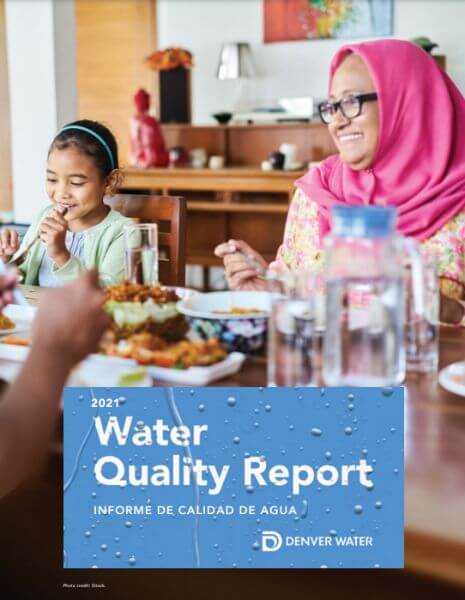
Testing After Natural Disasters
A natural disaster (like a tsunami or an earthquake) or another emergency can have a major impact on water quality, and testing in response to such an event can determine how water supplies have been affected.
Testing is the first step toward restoring the fundamental resources that are needed for basic survival, keeping in mind that the disease threat usually increases after a natural disaster due to unsanitary living conditions.
There are a few water quality parameters that are addressed after an emergency, including:
- pH
- Coliform bacteria
- Turbidity
- Chlorine residual
- Total dissolved solids
Water quality will often need to be monitored over a long period as water slowly returns to its pre-disaster quality. In the meantime, local authorities may need to extensively treat the water to make it safe for consumption or arrange for alternative short-term solutions, like bottled water.
At-Home Water Test Kits
Very basic residential water testing can be carried out at home using a Do It Yourself water quality testing kit.
A DIY drinking water test kit detects a handful of common water parameters and contaminants, including total alkalinity, pH, hardness, dissolved minerals, lead, copper, chlorine, mercury, fluoride, and nitrate/nitrite.
This type of testing is usually used on a one-off basis (by residents who are curious about their water quality, concerned about a certain contaminant, or keen to test the effectiveness of a water treatment process, for example), or periodically (e.g. once a year) to give a general overview of water quality.
An at-home water test kit contains testing strips and a color chart. When a testing strip is dipped in the water sample, it changes color. The color can be compared to the color chart to indicate which contaminants are present, and to what level.
DIY water testing is a good way to gather basic water quality information, but it’s not accurate or thorough enough to be used extensively for non-residential purposes.
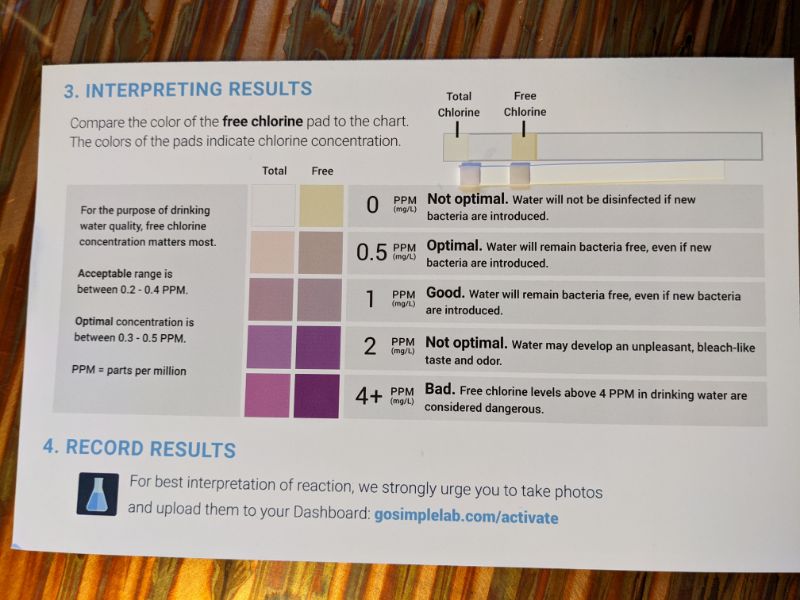
Chemical Analysis
A chemical analysis is used to measure the chemical elements in a water supply. For example, an elemental analysis can be performed to detect water’s dissolved oxygen levels.
Chemical analysis is also a quick and simple way to detect heavy metals. A person conducting the analysis should also consider any suspended soil particles in the water, since soil may contain traces of heavy metals that, while not dissolved in the water, would still be consumed by someone drinking the water.
This method of water testing and monitoring is often complex and expensive. However, there are a few chemical analysis tools available for residential use, such as fish tank test kits.
Environmental Indicators
There are various environmental indicators that can be used for monitoring and testing water quality. These can be split into biological indicators, physical indicators, and chemical indicators.
Biological indicators
Biological indicators include:
- Americamysis bahia (Mysid shrimp)
- Coliform bacteria
- Escherichia coli (E. coli)
- Ephemeroptera (mayflies)
- Pimephales promelas (fathead minnow)
- Mollusca (mollusks)
- Plecoptera (stoneflies)
- Trichoptera (caddisflies)
- Sea urchins
Physical indicators
Physical indicators include:
- Total dissolved solids (TDS)
- Total suspended solids (TSS)
- Total hardness
- Water temperature
- Water odor
- Water color
- Water taste
- Water turbidity/transparency
- Water conductivity
Chemical indicators
Chemical indicators includes
- pH
- Dissolved oxygen
- Chemical oxygen demand
- Biochemical oxygen demand
- Nitrate
- Pesticides
- Heavy metals
- Surfactants
- Orthophosphate
The presence of certain chemical, physical, or biological indicators may point towards good or bad water quality. For instance, most chemical indicators (heavy metals, pesticides, nitrate, etc) poorly affect the quality of a water supply, but certain biological indicators (such as mayflies and stoneflies) are generally present in regions with good-quality water.
Evaluating environmental indicators is a good option for folks who want to get a general water quality reading but can’t afford or manage a large-scale lab analysis.
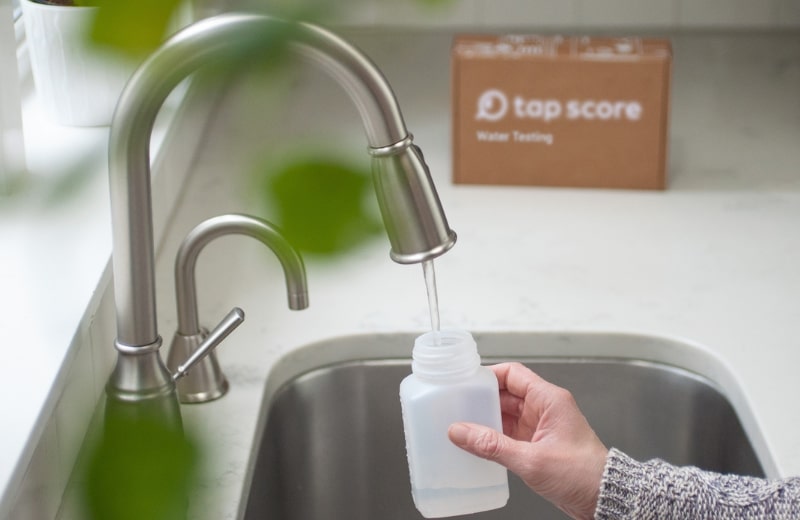
Residential Well Water Testing
Private well owners get their residential tap water from an underground well, rather than a municipal supplier. Regular water testing and monitoring is essential for well owners because local authorities don’t treat private well supplies to make them safe for human consumption.
There are several water testing methods for wells, but laboratory testing – sending off a water sample to receive a water test report – is the most reliable and common.

New wells or homes should test for the following water parameters and contaminants:
- Bacteria
- Total hardness
- Calcium
- Magnesium
- pH
- Sodium absorption ratio
- Nitrates
- Conductivity
- Iron
- Total dissolved solids (TDS)
To account for changes to water quality, the CDC says a well owner should also test their water supply once a year for the following contaminants:
- Total coliform bacteria
- Total dissolved solids (TDS)
- Nitrates
- pH levels
- Any contaminants of concern
Additionally, well owners should test their water every 5 years for:
- Bacteria
- Total hardness
- Calcium
- Magnesium
- pH
- Sodium absorption ratio
- Nitrates
- Conductivity
- Iron
- Total dissolved solids (TDS)
- Alkalinity
- Potassium
- Chloride
- Fluoride
- Sulfate
To get a proper understanding of their water quality, well owners are advised to take a raw water sample, meaning that the water hasn’t been treated by, or influenced by, any at-home water treatment units. Two samples may be taken – one of the untreated surface water or groundwater and one of the treated water – to determine the effectiveness of a water treatment system’s performance.
Private wells aren’t regulated by the Environmental Protection Agency. But well owners should still refer to EPA standards and guidelines when testing water quality and determining possible treatment options.
Special attention should be given to contaminants of local concern or contaminants that have been found in high quantities in the past.
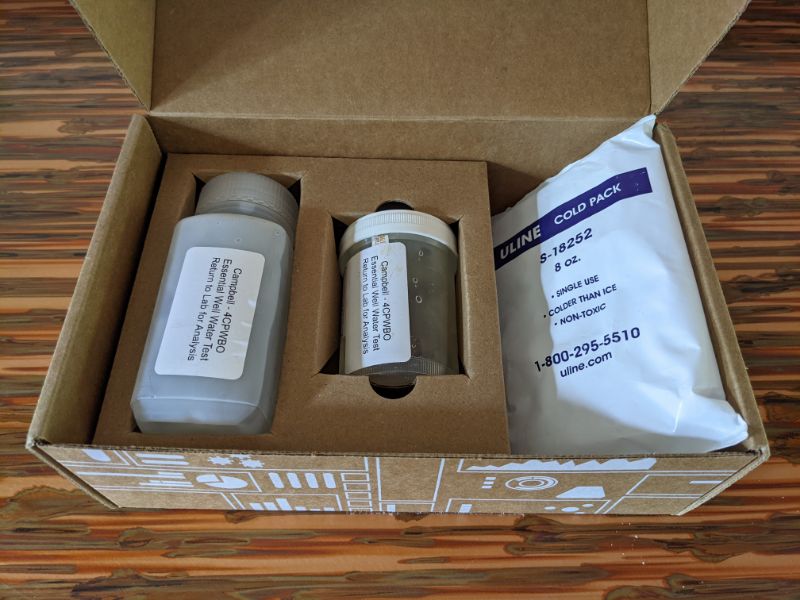
Real-Time Monitoring
We mentioned earlier that public water suppliers produce Consumer Confidence Reports that provide water testing results from one specific occasion. Although these reports are only produced and distributed once a year, the majority of water utilities have their own systems for collecting real-time information about the quality of their source water.
These systems include monitoring devices and sensors, which can measure dissolved oxygen, total dissolved solids, pH, turbidity, and more.
🌎 How Climate Change Affects Water Quality
So, how can climate change affect our water quality?
The quality of a natural water source can be affected in numerous water due to weather effects caused by climate change, depending on the context of the issue.
For instance, temperature extremes, water shortages, and heavy rain may cause floods or droughts, damaging water infrastructure and deteriorating water quality.
The United Nations General Assembly established a list of Sustainable Development Goals in 2015. The sixth of these goals – achieving universal access to safe drinking water – is threatened by the weather effects of climate change.
How exactly does climate change reduce the quality of water?
- Flooding – Causes floodwater to mix with wastewater and redistribute contaminants due to increased surface runoff.
- Heavy rainfall – Increases surface runoff and causes increased pollution and contamination in rivers, reservoirs, and shallow groundwater supplies. Increases the likelihood of microbiological contamination, especially following periods of drought.
- Increased meltwater from glaciers – Risks releasing contaminants that were historically deposited. Also causes the loss of the dilution of seasonal meltwater on downstream water quality due to shrinking glaciers.
- Droughts – Reduce the water levels and dilution capacities of rivers, making groundwater contamination more likely.
- Higher temperatures – Causes warmer water which increases the likelihood of harmful algal blooms and reduces water’s oxygen content.
- Rising sea levels and intense storms – Increase the amount of salt in water sources, especially in groundwater supplies.

✅ Standards For Water Quality
There are a number of water quality standards in place for various water sources. These standards were produced and implemented to suit the water’s use point and purpose.
Water Quality Standards Around The World
There are several international guidelines for drinking water quality standards:
- The World Health Organization (WHO) updated its guidelines for drinking water quality, now the 4th edition document, in 2017.
- The International Organization for Standardization (ISO) published water quality regulation, toxicity, and protection against pollution, in ICS 13.060.
National Water Quality Standards:
Most regions have their own national water quality standards:
United States
There are various state agencies in the United States that define water quality standards for different water bodies, including:
- The Clean Water Act (CWA), which requires each governing jurisdiction to submit a set of biennial reports on local water quality, which are submitted to, and approved by, EPA.
- The EPA under the Safe Drinking Water Act (SDWA) issues Drinking Water Standards, which all public water systems should adhere to.
Europe
There are three primary directives that are used to monitor and maintain water quality in Europe:
- The Directive on Urban Waste Water Treatment (91/271/EEC), produced on 21 May 1991, which concerns municipal wastewater discharge (and some industrial wastewater discharge)
- The Drinking Water Directive (98/83/EC), produced on 3 November 1998, which concerns the quality of potable water
- The Water Framework Directive (2000/60/EC), produced in 23 October 2000, which concerns the management of water resources
United Kingdom
The United Kingdom has its own water quality regulations for drinking water supplies in England and Wales. These are listed in the Water Supply (Water Quality) Regulations 2000 document.
India
India’s drinking water regulations are set by the Indian Council of Medical Research (ICMR) Standards for Drinking Water.
Australia
The Australian government has produced the Australian Drinking Water Guidelines, a document that provides guidance to water suppliers and regulators on managing and monitoring drinking water quality.
South Africa
Water supplies are grouped by user types in South Africa, with each potential user type having its own water quality guidelines. These guidelines are outlined in the 1996 Water Quality Guidelines.
Local Water Quality Standards:
Some regions, such as various states in the US, have their own water quality standards and regulations in place that local water utilities must adhere to alongside the national regulations.
This is common if a specific contaminant has been identified as particularly prominent or dangerous in the area.
Some states may also have their own laws relating to pollutants that are known to contaminate water supplies. For instance, Washington now restricts the use of PFAS (a group of manufactured chemicals) in firefighting foam and bans PFAS in consumer products.
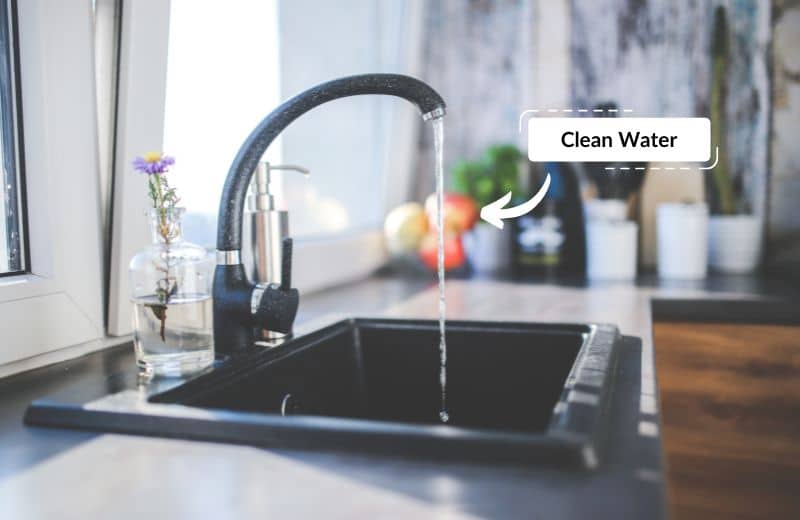
❔ Water Quality and Testing: FAQ
What are the biggest threats to water quality?
The biggest threats to water quality are point-source pollution (pollution from an identifiable source, like an industrial plant or factory), non-point-source pollution (pollution that can’t be traced to a single source), urban runoff, agricultural runoff, and septic sewage. With the right management practices in place, many of these threats can be reduced or prevented.
What are the 3 types of water quality?
The 3 water quality parameters are physical, chemical, and biological. Physical indicators of water quality include water temperature, water odor, and total dissolved solids. Chemical indicators of water quality include nitrate, dissolved oxygen and pesticides. Biological indicators of water quality include the presence of coliform bacteria and mayflies.
What tests are done for water quality?
When testing water quality, there are various parameters and contaminants that can be specifically tested for. The best test for residential drinking water supplies is laboratory testing, which provides thorough, accurate test results, usually within 2 weeks.
Why our water quality is important?
Water quality is important because it directly affects human health and the environment. Poor-quality water may make us sick or cause health issues like reproductive damage and neurological disorders. Poor or changing water quality could also affect local ecosystems, killing or harming plants and wildlife in the area. Without a high-quality water source, humans and animals simply couldn’t survive.
Does the US have good water quality?
Yes, the US generally has good water quality. We’re lucky to have access to potable drinking water as a public necessity. Water supplies in the US are generally safe. However, the US is still affected by pollution (largely due to human activities), disasters (such as flooding and earthquakes), and natural contamination, which all pose a threat to the quality of natural water sources.
Why is it important to monitor the water quality?
Monitoring water quality is important because it’s common for water parameters and contaminant levels to change over time, affecting its quality. Without regular water testing and monitoring, we’d be unaware of the potentially dangerous changes to the composition of our drinking water, and we wouldn’t be able to address these issues with suitable treatment options.
How is tap water quality monitored in the US?
Drinking water quality in the US is monitored by the Environmental Protection Agency (EPA). The Environmental Protection Agency has produced guidelines for primary and secondary contaminants (contaminants with health effects and contaminants with aesthetic effects), and water utilities must adhere to these guidelines when treating water for drinking.
Related: Learn the truth about the safety of drinking tap water
Where is the best water quality in the US?
Some of the US states with the best water quality are Minnesota, Kansas, Rhode Island, Missouri, and South Dakota. We’ve shared a guide on the states in the US with the best water quality if you’re looking for more information.
